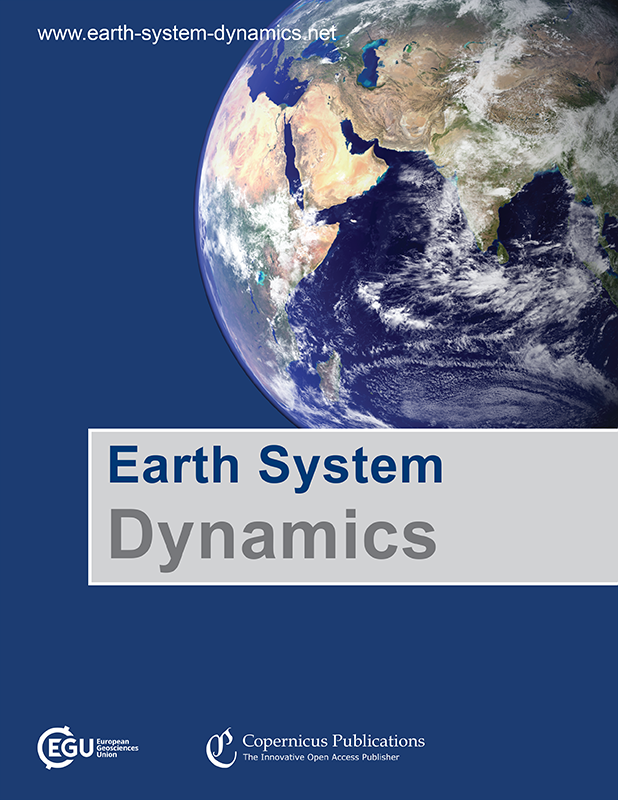Understanding variations in downwelling longwave radiation using Brutsaert's equation
IF 7.2
2区 地球科学
Q1 GEOSCIENCES, MULTIDISCIPLINARY
引用次数: 0
Abstract
Abstract. A dominant term in the surface energy balance and central to global warming is downwelling longwave radiation (Rld). It is influenced by radiative properties of the atmospheric column, in particular by greenhouse gases, water vapor, clouds, and differences in atmospheric heat storage. We use the semi-empirical equation derived by Brutsaert (1975) to identify the leading terms responsible for the spatial–temporal climatological variations in Rld. This equation requires only near-surface observations of air temperature and humidity. We first evaluated this equation and its extension by Crawford and Duchon (1999) with observations from FLUXNET, the NASA-CERES dataset, and the ERA5 reanalysis. We found a strong spatiotemporal correlation between estimated Rld and the datasets above, with r2 ranging from 0.87 to 0.98 across the datasets for clear-sky and all-sky conditions. We then used the equations to show that changes in lower atmospheric heat storage explain more than 95 % and around 73 % of diurnal range and seasonal variations in Rld, respectively, with the regional contribution decreasing with latitude. Seasonal changes in the emissivity of the atmosphere play a second role, which is controlled by anomalies in cloud cover at high latitudes but dominated by water vapor changes at midlatitudes and subtropics, especially over monsoon regions. We also found that as aridity increases over the region, the contributions from changes in emissivity and lower atmospheric heat storage tend to offset each other (−40 and 20–30 W m−2, respectively), explaining the relatively small decrease in Rld with aridity (−(10–20) W m−2). These equations thus provide a solid physical basis for understanding the spatiotemporal variability of surface downwelling longwave radiation. This should help us to better understand and interpret climatological changes, such as those associated with extreme events and global warming.利用布鲁特方程了解下沉长波辐射的变化
摘要。下沉长波辐射(Rld)是地表能量平衡中的一个主要项,也是全球变暖的核心。它受到大气柱辐射特性的影响,特别是温室气体、水汽、云层和大气蓄热差异的影响。我们使用 Brutsaert(1975 年)推导出的半经验方程来确定造成 Rld 时空气候学变化的主要项。该方程只需要近地面的气温和湿度观测数据。我们首先利用 FLUXNET、NASA-CERES 数据集和 ERA5 再分析的观测资料对该方程及其由 Crawford 和 Duchon(1999 年)扩展的方程进行了评估。我们发现,估算的 Rld 与上述数据集之间具有很强的时空相关性,在晴空和全天空条件下,各数据集之间的 r2 在 0.87 到 0.98 之间。然后,我们利用该方程表明,低层大气蓄热的变化分别解释了 Rld 的 95% 以上的昼夜变化和 73% 左右的季节变化,区域贡献随纬度的增加而减小。大气辐射率的季节变化起着第二种作用,它受高纬度地区云量异常的控制,但在中纬度和亚热带地区,尤其是季风区,则主要受水汽变化的影响。我们还发现,随着该地区干旱程度的增加,辐射率的变化和大气蓄热量的降低往往会相互抵消(分别为-40 W m-2和20-30 W m-2),从而解释了Rld随着干旱程度的增加而相对较小的下降(-(10-20) W m-2)。因此,这些方程为理解地表下沉长波辐射的时空变化提供了坚实的物理基础。这将有助于我们更好地理解和解释气候学变化,如与极端事件和全球变暖相关的变化。
本文章由计算机程序翻译,如有差异,请以英文原文为准。
求助全文
约1分钟内获得全文
求助全文
来源期刊

Earth System Dynamics
GEOSCIENCES, MULTIDISCIPLINARY-
CiteScore
13.20
自引率
5.50%
发文量
61
审稿时长
36 weeks
期刊介绍:
Earth System Dynamics (ESD) is a not-for-profit international scientific journal committed to publishing and facilitating public discussion on interdisciplinary studies focusing on the Earth system and global change. The journal explores the intricate interactions among Earth's component systems, including the atmosphere, cryosphere, hydrosphere, oceans, pedosphere, lithosphere, and the influence of life and human activity. ESD welcomes contributions that delve into these interactions, their conceptualization, modeling, quantification, predictions of global change impacts, and their implications for Earth's habitability, humanity, and the future dynamics in the Anthropocene.
 求助内容:
求助内容: 应助结果提醒方式:
应助结果提醒方式:


